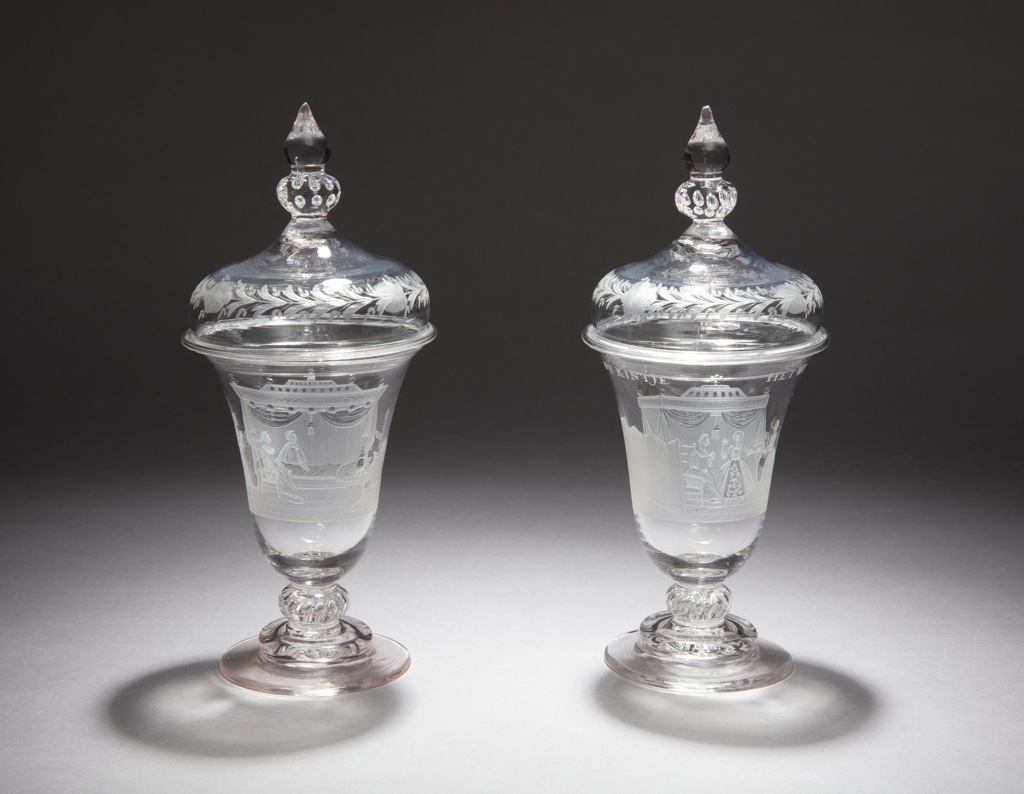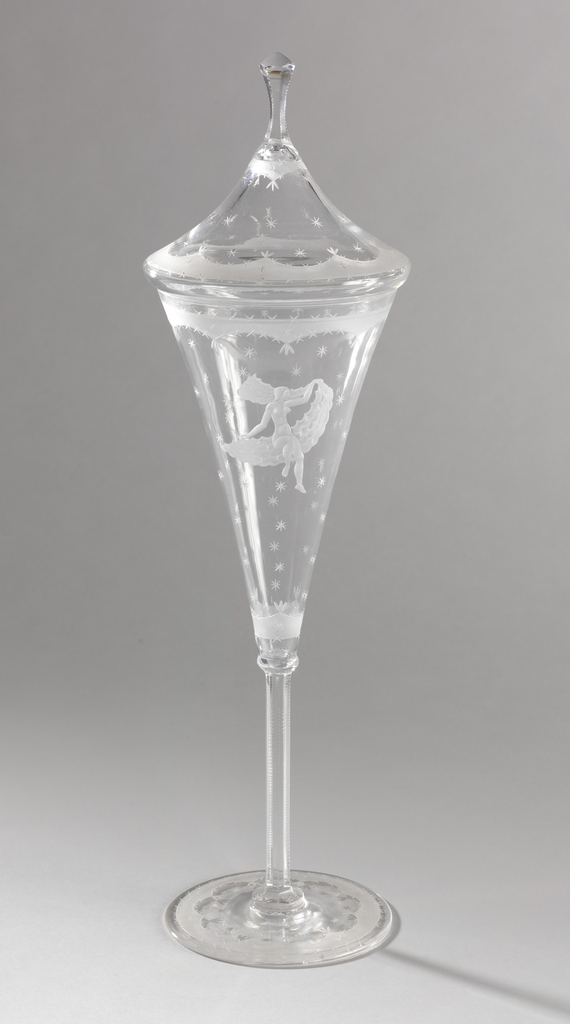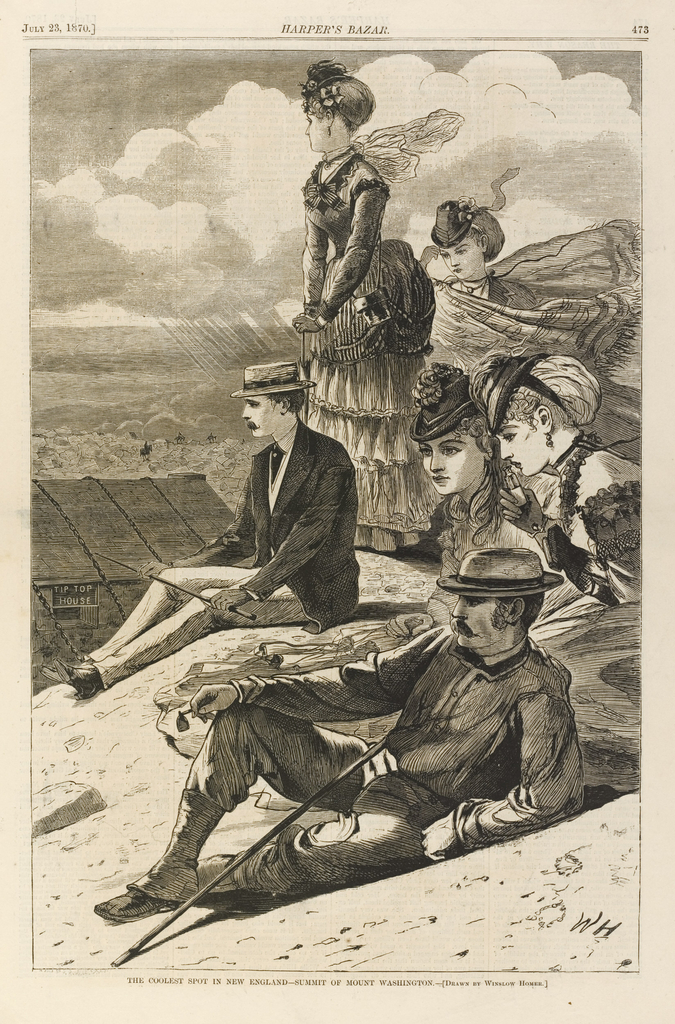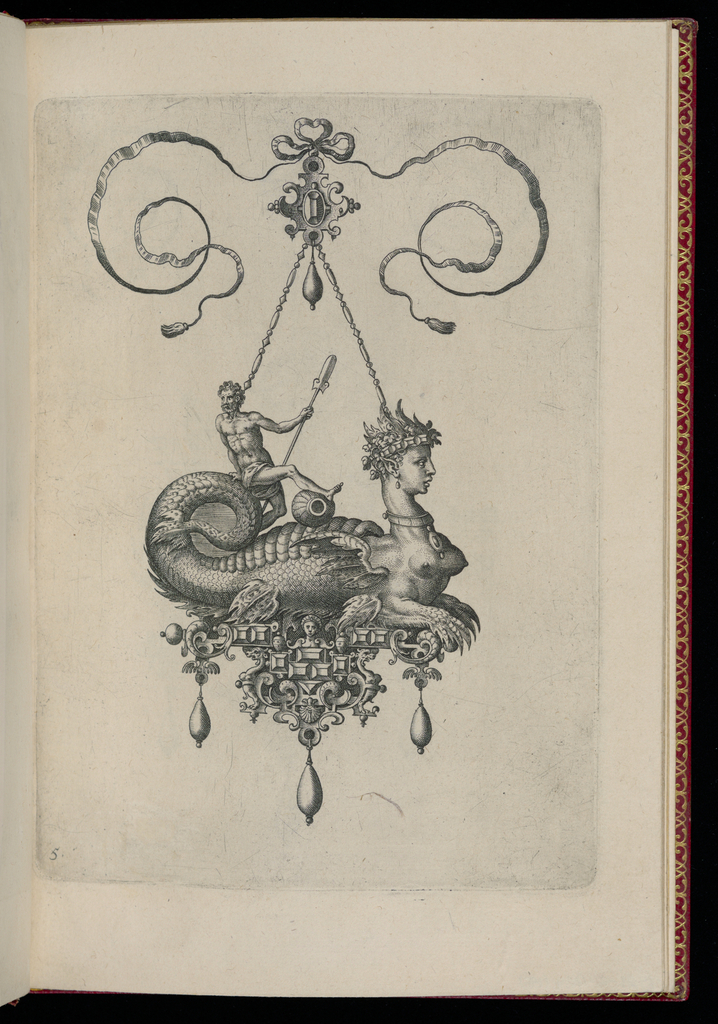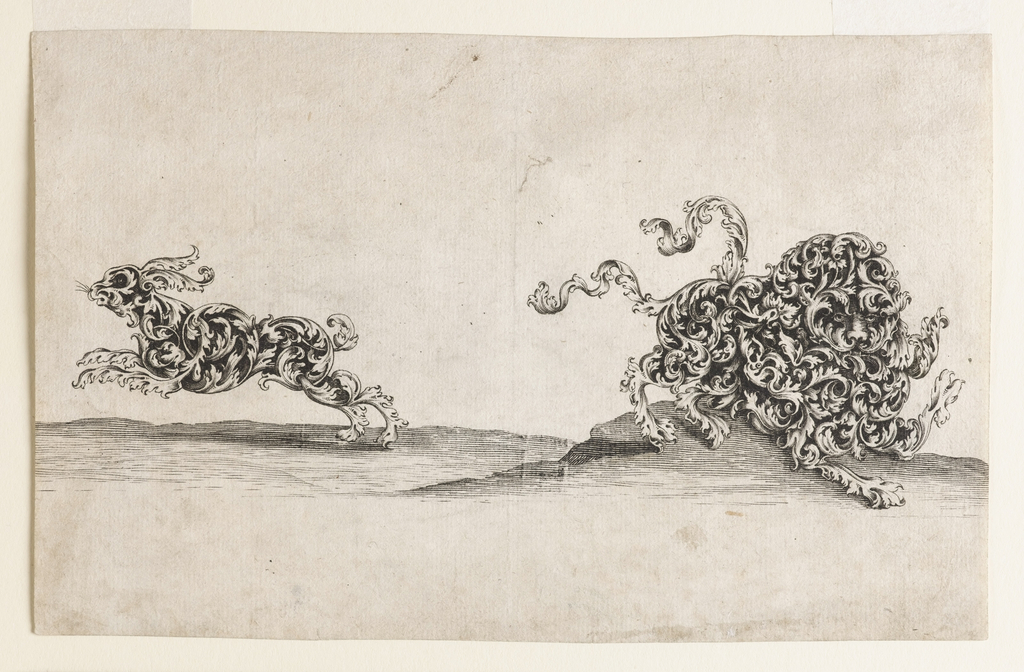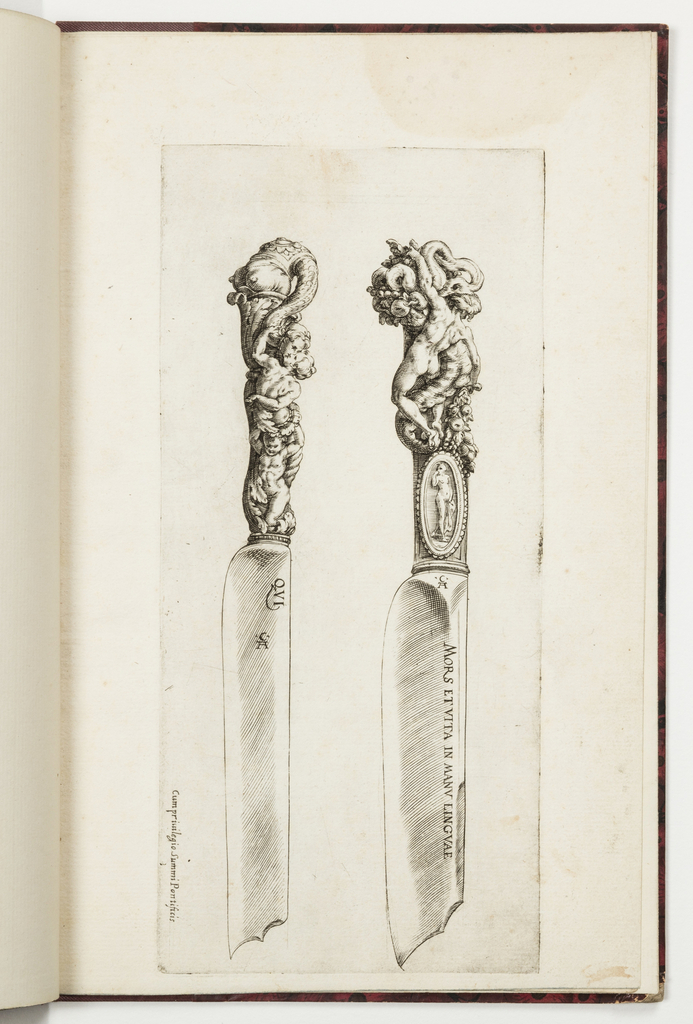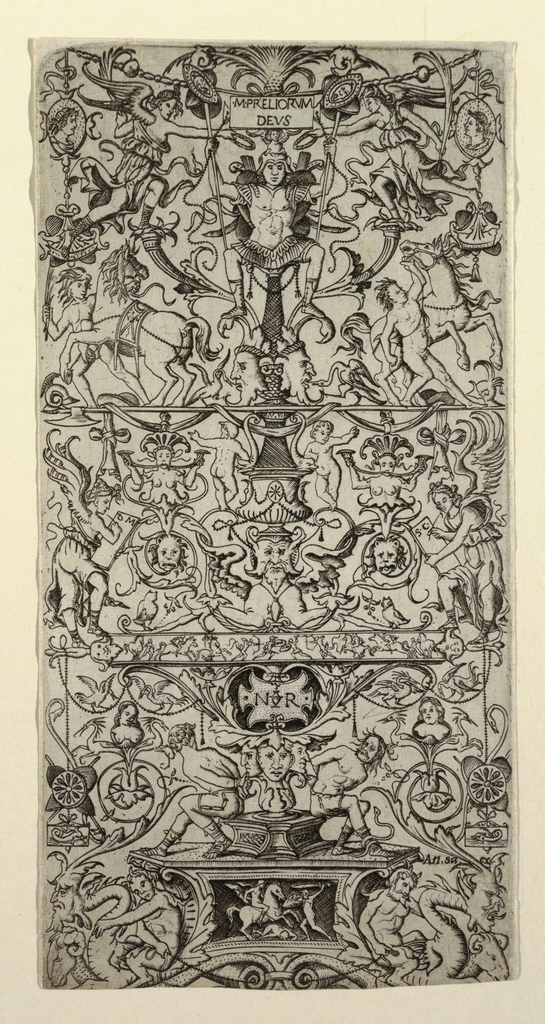Written by Jasmine Keegan The United Nations has designated 2022 the International Year of Glass. Cooper Hewitt is celebrating the occasion with a yearlong series of posts focused on the medium of glass and museum conservation. Dutch glass artisans reached high levels of skill in ornamentation during the 18th century, as demonstrated in these beautifully decorated...
This tall glass covered vessel was designed in 1923, by Edward Hald, artistic director of the Orrefors glassworks in Sweden. It features engraved decoration of a female figure seated on a fluttering banner, amid a field of stars bordered by scalloped bands. The delicate star and band motifs are carried through in the vessel’s tapered cover...
In celebration of Women’s History Month, March Object of the Day posts highlight women designers in the collection. Maria Sibylla Merian (German, 1647-1717) was a remarkable naturalist, famous for her expertise in entomology and the art and details of her scientific illustrations. From a young age, Merian was taught how to draw and enthusiastically explored...
Seeking a way to beat the heat of summer while still looking cool? This 1870 print after a drawing by Winslow Homer suggests that more comfortable climes may require a bit of a climb. In this scene, a group of well-dressed urban men and women take in the views at the summit of Mount Washington,...
An oarsman reclines on a sphinx’s scaly tail in this design for a pendant. Enameled, bejeweled, and dangling from a noblewoman’s gown, the imperious sphinx would appear fully tamed. Like the other marine monsters in this series of pendant designs by Hans Collaert, she symbolizes the sea’s abundance, harnessed by Flemish fishermen and merchants. These...
Some of the most common elements found in grotesque designs are pairs of contorted nudes known as ignudi (plural of ignudo). In many designs, figures assume postures that are variations or counterposes of their lateral mate’s. Like the grotesque motif itself, these compliant figures invite the artist to invent, exaggerate, and rearrange their parts into endless...
A lion and a hare are composed entirely of scrolling acanthus leaves in this late-seventeenth-century engraving. It is the fifth plate from a suite of six designs for gold ornament, entitled Neu-ersonnene Gold-Schmieds Grillen (New Designs for Ornaments in Gold). The acanthus motif, whose origins date to ancient Greece and Rome, was omnipresent in European...
“Death and life are in the power of the tongue,” warns a proverbial inscription on a knife blade imagined by Francesco Salviati. Knife handles further illustrate the tongue’s pleasures and perils, and these sensuous yet violent scenes seem to caution diners about to indulge. On one handle, a figure risks a snakebite to reach into...
Have you ever wondered where you could find a spotted, two-legged creature with the body of a lizard, the ears of a goat, the wings of a bird and the claws of a chicken? How about a monster with the head of a dolphin, ears of acanthus leaves, the body of a snake, and a tail...
